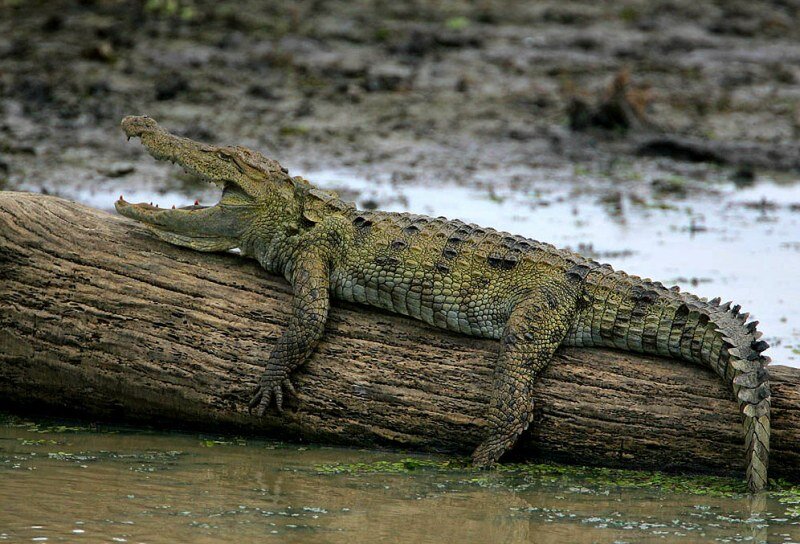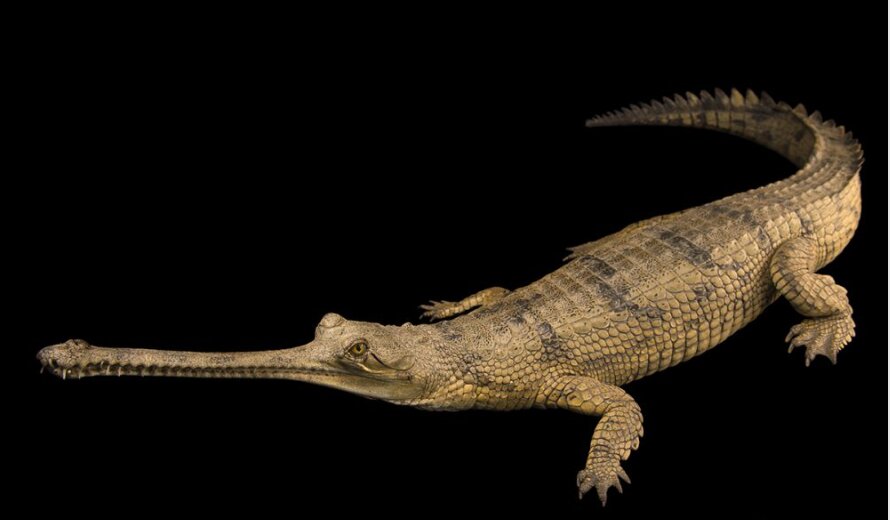Biodiversity & Environment
World Crocodile Day
- 18 Jun 2022
- 6 min read
For Prelims: World Crocodile Day, IUCN List of Threatened Species, CITES, Wildlife Protection Act, 1972
For Mains: Crocodilian Species in India and Conservation Efforts
Why in News?
World Crocodile Day is celebrated on 17th June. The day is a global awareness campaign to highlight the plight of endangered crocodiles and alligators around the world.
What are the Crocodilian Species in India?
- Mugger or Marsh Crocodile:

- Description:
- The mugger is an egg-laying and hole-nesting species.
- The mugger is also known to be dangerous.
- Habitat:
- It is mainly restricted to the Indian subcontinent where it may be found in a number of freshwater habitat types including rivers, lakes and marshes. However, it can even be found in coastal saltwater lagoons and estuaries.
- It is already extinct in Bhutan and Myanmar.
- Threats:
- Habitat destruction, fragmentation, and transformation, fishing activities and use of crocodile parts for medicinal purposes.
- Protection Status:
- IUCN List of Threatened Species: Vulnerable
- CITES : Appendix I
- Wildlife Protection Act, 1972 : Schedule I
- Description:
- Estuarine or Saltwater Crocodile:
.jpg)
- Description:
- It is considered as the Earth’s largest living crocodile species.
- The estuarine crocodile is infamous globally as a known maneater.
- Habitat:
- It is found in Odisha’s Bhitarkanika National Park, the Sundarbans in West Bengal and the Andamans and Nicobar Islands.
- It is also found across Southeast Asia and northern Australia.
- Threats:
- Illegal hunting, habitat loss, and antipathy toward the species because of its reputation as a man-eater continue to put pressure on the population.
- Protection Status:
- IUCN List of Threatened Species: Least Concern
- CITES : Appendix I (except the populations of Australia, Indonesia and Papua New Guinea, which are included in Appendix II).
- Wildlife Protection Act, 1972 : Schedule I
- Description:
- Gharial:

- Description:
- Gharials, sometimes called gavials, are a type of Asian crocodilian distinguished by their long, thin snouts which resembles a pot (ghara in Hindi).
- The population of Gharials are a good indicator of clean river water.
- The gharial is known to be a relatively harmless, fish-eating species.
- Habitat:
- The gharials are mostly found in fresh waters of the himalayan rivers.
- The chambal river in the northern slopes of the Vindhya mountains ( Madhya Pradesh) is known as the primary habitat of gharials.
- Other himalayan rivers like ghagra, gandak river, Girwa river, Ramganga river and the Sone river are secondary habitats for gharials.
- Threats:
- Illegal sand mining, poaching, increased river pollution, dam construction, massive-scale fishing operations and floods.
- Protection Status:
- IUCN List of Threatened Species: Critically Endangered
- CITES: Appendix I
- Wildlife Protection Act, 1972: Schedule I
- Description:
What are the Reasons and Solutions of Human-Crocodile Conflict?
- Reasons:
- An encroachment of humans on the river banks and marshy areas with an increased urbanisation is one of the foremost reasons for increasing human-crocodile conflict in these areas.
- Hotspots:
- Vadodara in Gujarat, Kota in Rajasthan, Bhitarkanika in Odisha and the Andaman and Nicobar Islands are considered as the human-crocodile conflict hotspots in India.
- Possible Solutions:
- Considering the importance of crocodiles in maintaining the balance in the ecosystem, raising awareness among local people with the possible relocation of crocodiles are some of the feasible options for the protection of the species.
What are the Crocodile Conservation Efforts?
- Odisha has announced a cash award of Rs. 1,000 to conserve gharials in Mahanadi River Basin.
- The Crocodile Conservation Project was launched in 1975 in different States.
Way Forward
- Transboundary cooperation is very much possible and needed in south Asia.
- There should be information exchange wherever there is transboundary movement of animals.
- Crocodile exclusion enclosures should be installed at water bodies that they inhabit.
- Nuisance-causing crocodiles should be identified and captured by training and equipping a ‘crocodile squad’ for rapid response. A proper guide should be formulated for the capture and translocation of large and problematic (nuisance) crocodiles.
- There is a need to utilize manpower, modern technology and funds to conduct a proper survey to find the real time status of the crocodile population in the country.
- It can be done through geo-tagging the animals so that their movements can be monitored to prevent human-crocodile conflicts.




